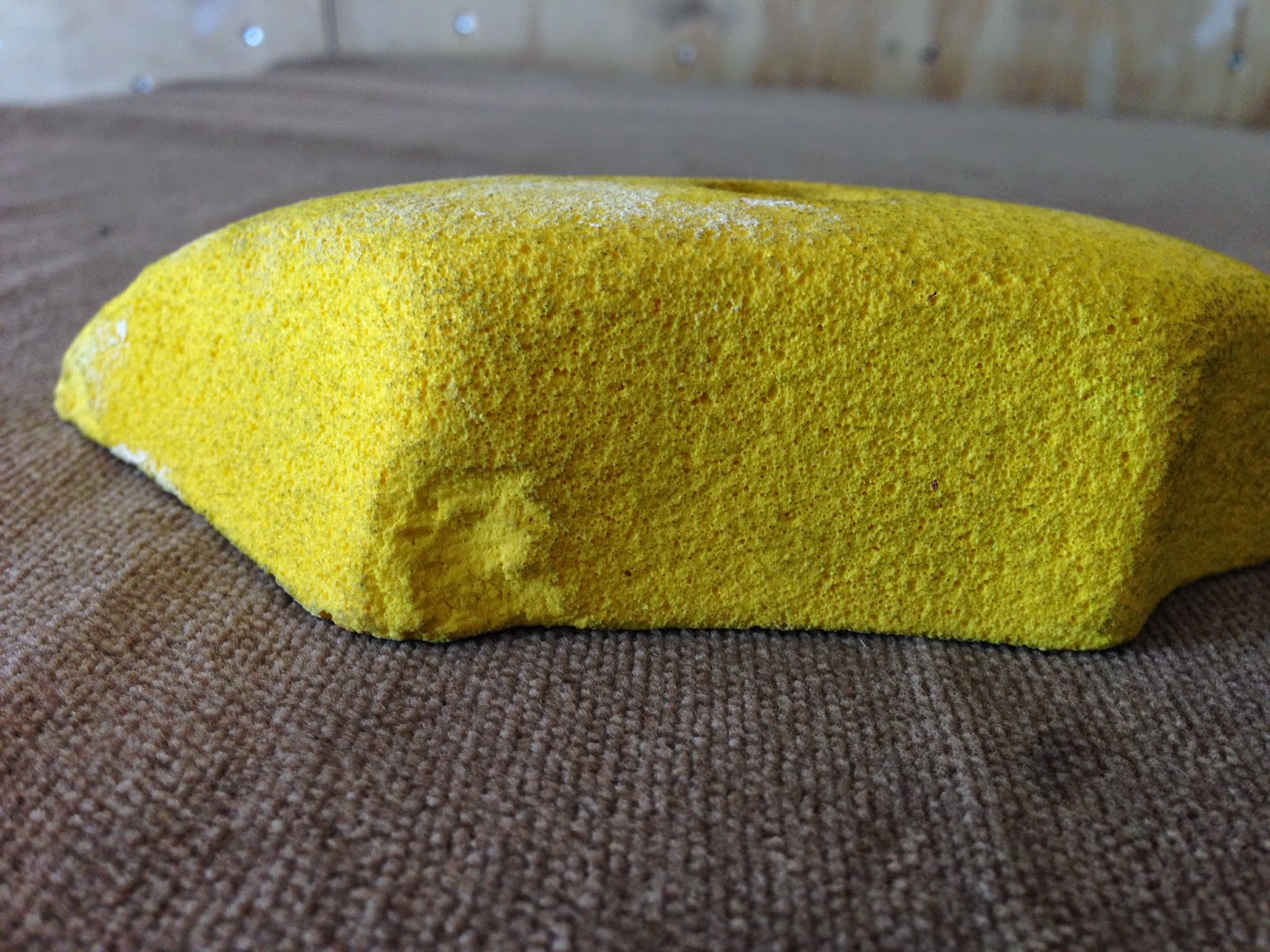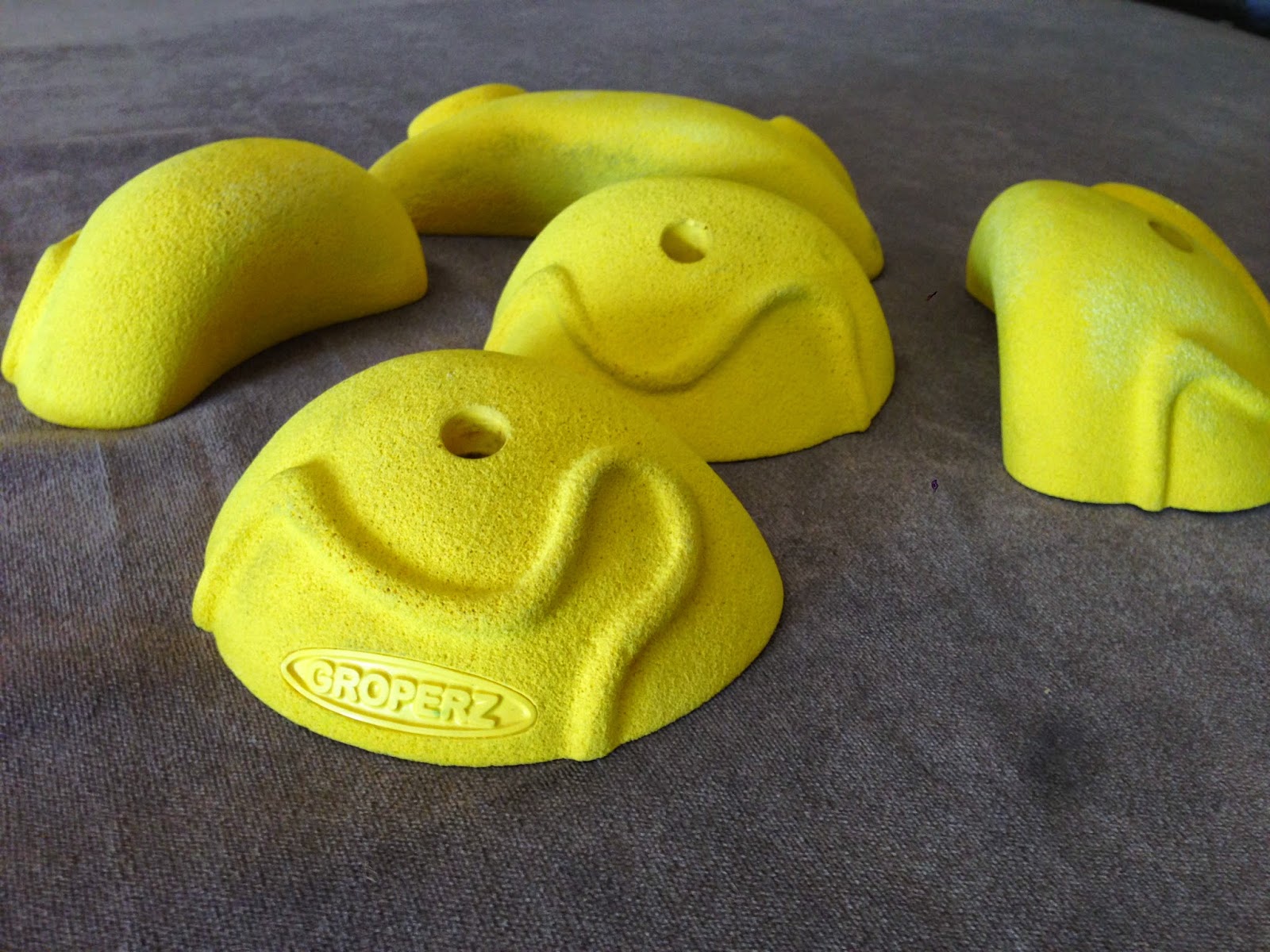Groperz Climbing Holds Review from The Proving Ground on Vimeo.
Back in the day, Groperz holds were the cream of the crop at our Midwest gym – everyone loved climbing on them, setters would fight over them and their shapes were pretty wild for their time (the vast majority were shaped by none other than Tony Reynaldo). A lot of these holds are still regularly pulled from the hold bins for new routes despite their age and lack of vibrant color from years of acid baths. The glaring weakness was their relatively slick texture. Recently, nearly all the classic shapes and a bunch of new ones (most shaped by Tony as well) now feature a grippy texture similar to most holds on the market, which should help bring them back into relevance in the current hold market.
It must be noted that Groperz plastic, which is a proprietary mix, feels relatively soft and a bit spongy. Chalk caked on very quickly and shoe rubber seemed to become more embedded than with any other holds we’ve used. When drop testing them on concrete, the edges chipped pretty readily, and when the chipping occurred, we found we could actually pick off the freshly chipped surface with our fingernails… When we really cranked them tight on a concrete wall, there were some other issues. The plastic compressed behind the washer and upon removal there was a 1-2mm gap between the washer and the plastic. This compression also warped the washer which caused some small cracks to radiate around the bolt hole on the back of the hold. The price tag is certainly attractive, and for some users, these durability shortcomings may not be an issue, but there is certainly a trade off that must be considered.
We proceed with the review of the hold shapes and most suitable use, allowing you to make that consideration on your own.
Groperz divides their hold line by size but does not use the standard S, M, L, etc. Their categories are Minis, Footgrips, Poprocks, Keystones, Jumbos and Megalithics. This isn’t necessarily a problem in and of itself, but the individual sets don’t have unique names – they have a number and letter following the size. These “names” aren’t memorable and make it difficult to communicate with others about the hold sets. Some of these shapes have very memorable features, and it seems assigning unique names would be pretty easy.
The package for review from Groperz included:
- Megalithics 7A $99 3 slopers
- Jumbo 27A $42 5 slopey jugs
- Keystone 39A $25 5 angular slopey pinches
- Keystone 41A $39 5 mini-jugs
- Poprocks 17A & 17B $19 10 angular crimps
- Footgrips 12A $19 5 angular footholds
The yellow sloping jugs (Jumbos 27A) are 2.5-3 pad incuts with a very large comfortable radius. They are all large enough to warrant a set screw hole, yet 3 of them are without. They have a worm-like protrusion on the front that makes a great thumb catch and would make for a perfect name for this set – WORM JUGS! The hollow backs are impeccable and are pretty aggressive with how much material is removed. The degree of incut varies, but all are pretty positive. They surprised us on the 50 degree wall – deceivingly difficult! They lend themselves well to the V3-V4 range at this angle, and would be downright nasty on a roof. These were easily our favorites in this review.
The slopers (Megalithics 7A) are pretty standard fare. They are very comfortable, have a set screw hole with a washer, and really aggressive hollow back to minimize weight and cost. The logo on the largest hold is very large… It makes the hold pretty much useless when turned upside down. They also have their logo tastefully featured on the inside of the hollowback which is a nice touch that we’ve seen on larger Groperz holds in the past. There are some subtle differences in their shape but they are essentially the same hold in different sizes. On the 20 degree wall, they are basically jugs and on the 50 degree wall they were extremely difficult unless set into compression style moves – the sweet spot for these holds would be right around 35 degrees.
The Poprocks 17A, 17B and Footgrips 12A are shaped in the same polyhedron style. Lots of angle changes, but all the surfaces are flat. The Poprocks work well as crimps on moderate overhangs and would make feet positive enough for use in a roof. Most of them have multiple angles on the crimping edge, which rewards accuracy and control. These got pretty difficult on the 50 degree wall, but we set a few moves in the V5-6 range. The Footgrips are quite versatile - multiple slopes are found on all of them, so changing the difficulty is as easy as turning the hold. They would also work well as handholds on technical vertical routes. Both of these sets would be at home in some capacity on any wall.














No comments:
Post a Comment